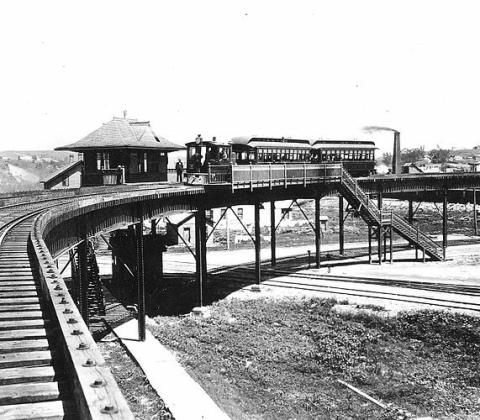This photograph shows one of the stations for Sioux City's elevated railroad. It was developed in 1890 by the Sioux City Rapid Transit Company to connect the city to the suburb of Morningside by crossing over the Floyd River. This was the third elevated railroad in the nation after New York and Kansas City. The railroad took almost a full year and $600,000 to build. Once it was complete, it rose 22 feet off the ground. Rides cost one nickel each or six for one quarter. In 1892, the railroad converted from steam power to electricity, making it the first electric elevated railroad in the country. The railroad was eventually shut down and deconstructed in 1900 due to financial issues. Content can be used with the following standards: 4th grade SS 4.25 Technological Change in a lesson on transportation advancements in the late 1800s. For any use other than instructional resources, please check with the organization that owns this item regarding copyright restrictions.
2018.046.004 [Print, Photographic]
Legal Status
Ownership of this resource is held by the Sioux City Public Museum and has been provided here for educational purposes only, specifically for use in the Iowa Museum Association's "Teaching Iowa History" project. It may not be downloaded, reproduced or distributed in any format without written permission from the Rights Holder. For information on U.S. and International copyright laws, consult an attorney.

